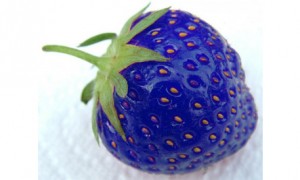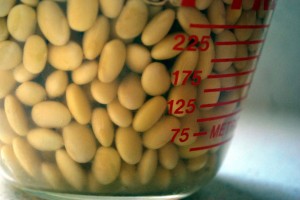 NASA has finally installed an Earth-facing HD webcam on the ISS, and is streaming the video for all to enjoy…check it out below! If the image is black it means the ISS is on the dark side of Earth, gray means the feed is currently down. Flying discs in the image mean Martians are about to invade my favorite planet.
NASA has finally installed an Earth-facing HD webcam on the ISS, and is streaming the video for all to enjoy…check it out below! If the image is black it means the ISS is on the dark side of Earth, gray means the feed is currently down. Flying discs in the image mean Martians are about to invade my favorite planet.
Facts about GMOs
 With all the news about GMOs…what do you really know about them? Ignoring the health concerns for a moment, it’s good to look at some facts about how widespread they are, and that’s what this article at the WSJ does. Some key points:
With all the news about GMOs…what do you really know about them? Ignoring the health concerns for a moment, it’s good to look at some facts about how widespread they are, and that’s what this article at the WSJ does. Some key points:
- GMO crops have grown, on average, by 10 million hectares a year since 1996 (when they were introduced).
- Most of the world’s GMO crops consist of four types of plants: soybeans (48%, by acreage)), corn (33%), cotton (15%), and canola (5%).
- Five countries are responsible for about 90% of GMO crops. US (40%), Brazil (23%), Argentina (14%), India (6%), and Canda (6%) – leaving other countries at 11% total.
- In the US, most major crops are GMOs, more than 90% of our top crops like corn, soybeans, and cotton. I think that goes a long way towards explaining opposition to GMO labeling!
- Over 75% of GMO seed designs are owned by 10 companies (some of those are GM, some are non-GM but still considered proprietary). Selling seed is a $34.5 billion business.
You can read more at the WSJ article linked above. I’m a huge fan of using science to improve our lives, but believe it cannot be selective science like GMOs are. What I mean is, new seeds are designed, but long term health effects are not adequately studied before the seeds are introduced to market. Instead, seeds are put on the market, making us all guinea pigs, but without adequate control of the variables, any health concerns that may someday surface cannot be accurately tied to any single crop. There can be no accountability, and with neither accountability nor laws requiring extensive testing, there is no incentive for companies to be sure their products are human-safe. While some GMO efforts are likely benign, the idea of engineering corn to produce poison to kill insects for example (read up on BT Toxin)…and then telling us it’s OK for us to eat that poison…that’s a real stretch.Oh, and that picture of a blue strawberry? That’s not photoshop, that’s GMO at its finest, and you can read more about that here.
A new book about socio-economic inequality
There’s a lot of talk these days about economic inequality in this country, and now there’s a new book on the subject that seems to be getting a LOT of attention, Capital in the Twenty-First Century by Thomas Piketty. The video below has Paul Krugman and Bill Moyers discussing the book; Paul Krugman says “even those of you who talk about the 1% don’t really get what’s going on.” The issue is that inherited wealth is playing a bigger and bigger role in society and politics; economic inequality is becoming more and more entrenched in society.
The video below is long (24 minutes), but if you’re not prepared to tackle the 696 page book, it’s a good way to get some quick insight into this very important issue.
Turn your phone 90 degrees!
Funny video – but not for young kids (a bit of blood…there’s that part about ‘if you don’t, I’ll break your knees’…). There are few things that bother me more than videos shot in portrait mode…
Do you realize you’re consuming Roundup?
 High levels of glyphosate (the weed-killing chemical in Roundup) have been found to be present in genetically engineered soy beans (all tested samples were grown in Iowa). It’s not terribly surprising, for one of the main reasons crops like soy are genetically engineered in the first place is to be resistant to Roundup, so that they may be sprayed with that to control weeds. The chemicals get on the food, the food ends up on your plate…simple as that. It’s not something you can just wash off either, as glyphosate is absorbed by the plant, it’s inside your food.
High levels of glyphosate (the weed-killing chemical in Roundup) have been found to be present in genetically engineered soy beans (all tested samples were grown in Iowa). It’s not terribly surprising, for one of the main reasons crops like soy are genetically engineered in the first place is to be resistant to Roundup, so that they may be sprayed with that to control weeds. The chemicals get on the food, the food ends up on your plate…simple as that. It’s not something you can just wash off either, as glyphosate is absorbed by the plant, it’s inside your food.
The study (here’s a link to the source) found levels of Roundup to be 9mg per kilogram, which is double what Monsanto themselves deemed ‘extreme’ way back in 1999 (link). The level deemed ‘safe’ by governments is 20mg/kg in the US…but the interesting thing is that it used to be 0.1mg/kg until it was raised in 1999. Europe did the same, raising the ‘safe’ limit from 0.1 to 20mg/kg in 199. Brazil raised their ‘safe’ level from 0.2mg/kg to 10mg/kg in 2004 (but only for soybeans!). There is justifiably concern that the ‘safe’ levels were not raised based on scientific evidence, but rather for business reasons.
The study looked at a total of 31 soy samples, some were GM (qty 10), some were conventional soybeans (qty 10), and others were organic soybeans (qty 10). Without exception, all GM samples showed high levels of glyphosate, and none was detected in the non-GM samples.
So why is this a big deal? Well it’s not a chemical that has been scientifically shown to be safe…and quite the opposite, there are concerns that there may be a link between glysphosate and digestive issues, obesity, autism, Alzheimer’s, depression, Parkinson’s disease, liver disease, and cancer. Note that none of that is proven, just that there does appear to be some biological disruption caused by glyphosate, and that sort of biological disruption may explain the above. There’s a bunch of health-related information at this link or this one.
This trend of shipping untested product like this and making us all human guinea pigs is really disturbing. The reality is that if there IS any link here ever proven, it will be impossible to hold anyone accountable. Hence no incentive for people to do real, scientific testing beforehand.
It probably goes without saying, but…I recommend buying organic food whenever you can!


